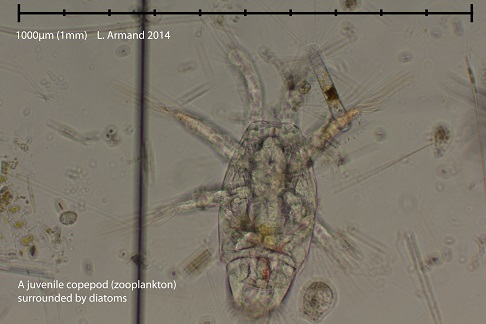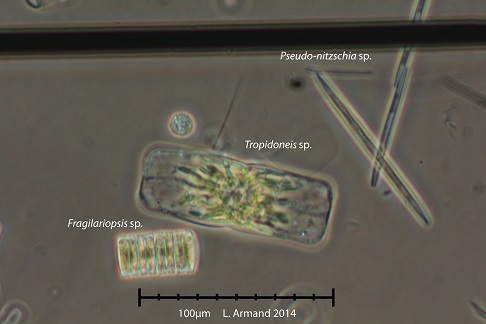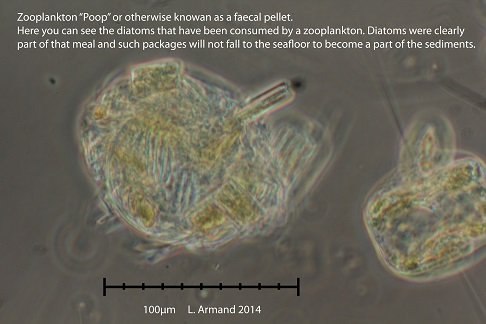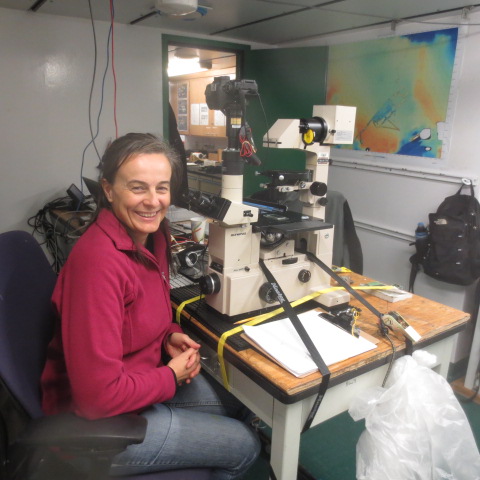If you were to visit my classroom back at Parishville-Hopkinton Central School and ask my ecology students what's my favorite group of organisms, they would say PlanktonPlankton are small or microscopic organisms that float or drift in fresh or salt water, especially at or near the surface, and serve as food for fish and other larger organisms..I guess it just amazes me the variety of life that can exist in a drop of water.
The basis of aquatic food chains.

PlanktonPlankton are small or microscopic organisms that float or drift in fresh or salt water, especially at or near the surface, and serve as food for fish and other larger organisms. can be described as any free floating microscopic organism (not to be confused with Sponge Bob's evil nemesis).Most plankton is quite small and requires a microscope to observe. They are typically measured in units called microns, which are 1/1,000,000^th of a meter. PlanktonPlankton are small or microscopic organisms that float or drift in fresh or salt water, especially at or near the surface, and serve as food for fish and other larger organisms. can be found in both fresh and salt water. PlanktonPlankton are small or microscopic organisms that float or drift in fresh or salt water, especially at or near the surface, and serve as food for fish and other larger organisms. is typically divided into 2 main categories, PhytoplanktonSmall or microscopic aquatic plants that float or drift in fresh or salt water. and ZooplanktonSmall or microscopic aquatic animals that float or drift in fresh or salt water.. ZooplanktonSmall or microscopic aquatic animals that float or drift in fresh or salt water. have animal like characteristics. They must eat and move to survive. Besides the copepod shown above other zooplankton include , paramecium, euglena and amoeba.


PhytoplanktonSmall or microscopic aquatic plants that float or drift in fresh or salt water. has the ability to produce their own food as they have chloroplasts. They are called algae. One particular group of algae called diatoms actually produces a glasslike shell. Once they die these shells fall to the bottom and make up much of the sediment. These types of phytoplankton are significant to the cruise. The micro paleontologists (Dr. Amy Leventer and Dr. Amelia Shevenell ) on board will use the sediment collected from the core sampling to find ancient diatoms. I will feature the work of the micro paleontologists later on in the cruise.

Our expedition's specialist of plankton is Dr. Leanne Armand. Dr. Armand collects and analyzes the plankton samples daily. She uses a special cone shaped net with a very fine mesh to gather the organisms and an inverted microscope to observe them. It gives a clearer view of the specimens. The specimens lay on the bottom of the slide reducing the need for adjustments.
PlanktonPlankton are small or microscopic organisms that float or drift in fresh or salt water, especially at or near the surface, and serve as food for fish and other larger organisms. holds many clues to the health and history of Antarctic waters. To put it best I will leave you with a passage from the book Endurance. A fascinating book about the incredible true adventure the Shackletonexpedition to Antarctica, "In the Antarctic, plankton-tiny one-celled plants and animals-is the basis for all life. The smallest fishes subsist on it, and they in turn become the food of larger fish, which are eaten by squids and seals and penguins, who constitute the food for killer whales, sea leopards, and giant sperm whales. The cycle of life begins with plankton, and when it is present, the other creatures of the Antarctic are never far behind."


Comments